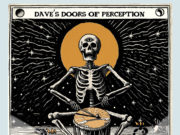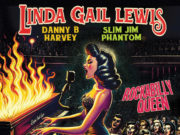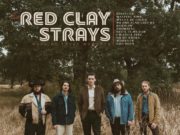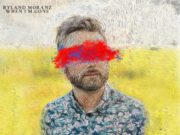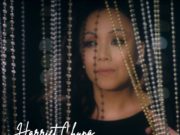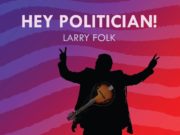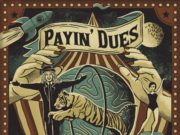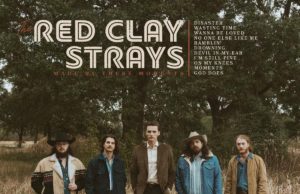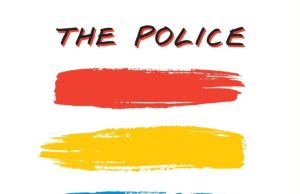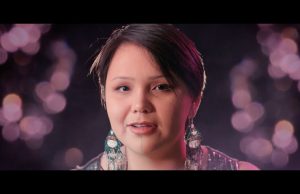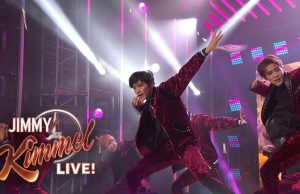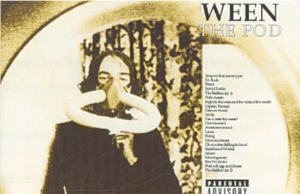 There are so many great bands with more than one lead vocalist — Guided By Voices, Sebadoh, Hüsker Dü, XTC, Faces, The Kinks, Chicago, ZZ Top, Sonic Youth, Supertramp, Yo La Tengo, Fleetwood Mac, Soft Machine, The Band, Traffic, Cream, Little Feat, Squeeze, Split Enz, Canned Heat, Black Mountain, B-52’s, Folk Implosion, Nomeansno, Pixies, Velvet Underground, The Cars, Three Dog Night, The Clash, Klaatu, Big Star, Mothers Of Invention, Doobie Brothers and Oasis.
There are so many great bands with more than one lead vocalist — Guided By Voices, Sebadoh, Hüsker Dü, XTC, Faces, The Kinks, Chicago, ZZ Top, Sonic Youth, Supertramp, Yo La Tengo, Fleetwood Mac, Soft Machine, The Band, Traffic, Cream, Little Feat, Squeeze, Split Enz, Canned Heat, Black Mountain, B-52’s, Folk Implosion, Nomeansno, Pixies, Velvet Underground, The Cars, Three Dog Night, The Clash, Klaatu, Big Star, Mothers Of Invention, Doobie Brothers and Oasis.
For me, the more evenly split the better — particularly when those multiple vocalists are also songwriters. For example, classic-era Guided By Voices was better than it has been since Tobin Sprout left. Hüsker Dü‘s songwriting/vocal competition between Bob Mould and Grant Hart is what kept the band from ever mailing it in and fuelled their constant development.
I’d love to include The Rolling Stones in that list, because the dynamic between Mick Jagger and Keith Richards had the same effect on the band’s music as that of Mould and Hart. But, sadly, Keith’s lead vocals are one-per-album at best. You can’t really call him a lead vocalist.
The Who are more difficult to pin down. There’s no question Roger Daltrey is the lead vocalist, because he almost does nothing else. But Pete Townshend certainly does take the lead much of the time. Among a list of the 165 logged songs recorded by The Who, Pete is the sole lead vocalist on 45 of them. He is the co-vocalist on about 20 more.
So, let’s get to the crux of the biscuit, as Frank Zappa would say. What I’m looking at today are bands where every member has taken a lead vocal at some point. Even better, if all members routinely do.
We’ll start with the obvious: The Beatles. Sure, Paul McCartney and John Lennon did the bulk of the heavy lifting vocal-wise, but all four had lead vocals. Ringo, as the weakest singer, had the fewest. Here’s the breakdown of era-released songs, by my count.
Lennon: 102
McCartney: 92
Harrison: 32
Starr: 11
Nerd stuff: There was one song which all four sang lead on (Flying) and one with no vocals by any of them (Revolution 9).
The other big one from my collection: KISS. Lead guitarist Ace Frehley was always contributing songs, but he didn’t start providing lead vocals until the sixth album, Love Gun, in 1977. On that album, Paul Stanley and Gene Simmons each take four vocal leads, while Frehley and drummer Peter Criss each have one. This pattern would remain the same on KISS Alive II’s studio side, where Frehley had one lead and Stanley and Simmons each had two. Nothing from Criss.
As a four-headed vocal monster, the band then put out four solo albums — one each — in 1978. For the followups, Frehley supplied lead vocals for three songs on both 1979’s Dynasty and 1980’s Unmasked. Criss sings lead on one Dynasty song but does not appear on Unmasked, even though he was credited on the cover. He was out of the band, quietly replaced in the studio by future Late Show With David Letterman drummer Anton Fig.
Frehley sings lead on one song on 1981’s Music From The Elder and did not perform at all on 1982’s Creatures Of The Night — even though he is credited. Mostly, the lead guitars are by Vinnie Vincent, but some from a handful of session players as well. The four-vocalist band effectively ended with Dynasty.
For many, Pink Floyd are a bit of a faceless band. Certainly for the casual fan, anyway. They rarely have photos of themselves on the album sleeves. Of their 15 studio albums, the band appear on two covers (three if you include the tiny little image of them within the psychedelic swirls of Saucerful Of Secrets). They are on the cover of the 1967 debut The Piper At The Gates of Dawn, the reverse of 1968’s Saucerful Of Secrets, the cover of 1969’s Ummagumma, the gatefold of 1971’s Meddle, one of the posters from 1973’s Dark Side Of The Moon, and not again until the gatefold of 1987’s Momentary Lapse Of Reason.
Right from the get-go, the Floyd were a multi-vocal band. Their debut has lead vocals from leader Syd Barrett, but also from Roger Waters on one track and a co-lead of Barrett and Rick Wright on another. Wright sings lead on Paint Box, which was the non-album flipside to the band’s third single Apples & Oranges. By the second album, all members had a lead vocal — in fact, five different ones. Drummer Nick Mason sings Corporal Clegg, while Barrett sings Jugband Blues, even though he was already fired from the band.
“It’s awfully considerate of you to think of me here
And I’m most obliged to you for making it clear
That I’m not here.”
Newcomer David Gilmour sings the lead on the title track and does a co-lead with Wright on Let There Be More Light. Wright has a sole lead on See Saw and Remember A Day, while Waters tackles Set The Controls For The Heart Of The Sun.
The only other vocal Mason ever provided was the heavily processed spoken line “One of these days I’m going to cut you into little pieces” on One Of These Days — the opening banger on Meddle. Oh, and the Floyd’s 1969 Christmas song. Wright has a co-lead vocal on Wearing The Inside Out from 1994’s The Division Bell, and two beauties on Dark Side Of The Moon (Time and Us And Them), but the last Pink Floyd song he actually sang the lone lead vocal on was Stay from 1972’s Obscured By Clouds. So their multi-lead vocal years were pretty brief as well.
Back in post-Beatle land, McCartney transformed Wings into a huge band by the mid-’70s and also started spreading the lead vocal duties around. Guitarist Denny Laine had been singing the odd song for a while — having once been the co-lead singer of The Moody Blues — but Macca let lead guitarist Jimmy McCullough sing Medicine Jar on 1975’s Venus & Mars. The followup Wings At The Speed Of Sound featured each member getting a lead, even drummer Joe English (Must Do Something About It) and Linda McCartney (Cook Of The House). Laine sang two and McCullough added Wino Junko.
Every member of The Beach Boys had vocal chops. My favourite, personally, was Carl Wilson. Anyone who did BOTH Good Vibrations and God Only Knows is untouchable. The only member of the group whose vocals were mainly used for backing and harmonies was guitarist Al Jardine. Though he did have one major hit as lead vocalist — Help Me Rhonda.
Crosby, Stills, Nash & Young don’t really count because they are a vocal group, and their drummer and bass player never took any leads. So shut up about them. Eagles count, but just barely. Drummer Don Henley, guitarists Joe Walsh, Glenn Frey, Bernie Leadon and bass players Timothy B. Schmidt and Randy Meisner all had notable leads — but what about Don Felder? Yep. One. On the band’s fourth album, 1975’s One Of These Nights, Felder sang lead vocal on Visions. It was the only time he sang lead.
All four members of The Monkees sang lead. Even Peter Tork had a few, such as Peter Percival Patterson’s Pet Pig Porky from 1967’s Pisces, Aquarius, Capricorn & Jones Ltd., and Long Title: Do I Have to Do This All Over Again from 1968’s Head. The first song he sang lead on was Your Auntie Grizelda.
San Francisco’s Moby Grape actually created quite a stir by virtue of the fact that all five of them contributed equally, even with lead vocals.
I’ll conclude with the inclusion of Beastie Boys, even though I didn’t include CSNY. As a rap act, sure, they’re also a “vocal group” — but in this case, the Beasties contributed equally and exclusively in the writing, performing and vocals. They were also way better.
• • •
Area Resident is an Ottawa-based journalist, recording artist, music collector and re-seller. Hear (and buy) his music on Bandcamp, email him HERE, follow him on Instagram and check him out on Discogs.


